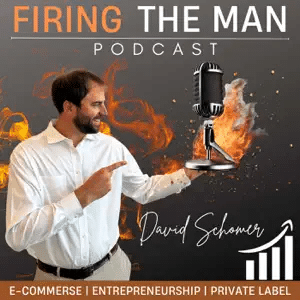Negative Results Course: Leapfrogging With Content You Don’t Control
Script from the lesson The Negative Results Course
Jason Barnard speaking: How to drown negative results, doing SEO for others? The situation: Here’s the bad result you want to leapfrog with other content that is more positive for your brand. Below it, perhaps on page one, perhaps on page two, there’s content on a third-party site that’s a great candidate for leapfrogging. What can you do to push this better content up your Brand SERP, leapfrog the negative content, and push that down the SERP?
Jason Barnard speaking: You’re going to do SEO for others, promote content that isn’t yours. If you haven’t watched the SEO episode in this course, then please do so. Most of the techniques in that episode are applicable and helpful to doing SEO for others. An important point here, this takes a great deal of patience. Doing SEO for others is slower than doing SEO for yourself because you don’t have the direct control and cannot apply many of the important SEO techniques yourself. But if you’re patient, this works. In the following, I will use the terms leapfrogger for the third party quality content you are promoting and trying to push up and leapfroggy for the negative content you are trying to push down. Firstly, link to the content. The first thing you can do is link to the leapfrogger from your own site.
Jason Barnard speaking: Make sure the link on your site to the leapfrogger is in the main content of a page and not in the footer. You want to make sure that Google sees that this leapfrogger content you are linking to is important to you. The link needs to be in a piece of content on your site that is relevant to the leapfrogger content.
Jason Barnard speaking: Since the third party leapfrogger content is about your brand, then your homepage is the obvious candidate. That is frequently the most powerful page on your site and a link there will have most effect. It’s also the page that Google ranks number one for searches on your brand, so it’s Google’s reference to your brand.
Jason Barnard speaking: If you don’t want to link from your homepage, then the About Us page is another great candidate as it’s very focused on your company. Beyond that, there are other possibilities, which one you choose will depend on the relationship between your brand and the third party. If the third party is a partner, then you can link from your partner’s page if you have one. If it’s a review platform, a link from your Reviews page would be appropriate. If the leapfrogger content is on a site you consider to be press, then a link from your press section would be a good bet. You might even think about creating a dedicated article or blog post about the other brand and link to the leapfrogger content from there.
Jason Barnard speaking: Some pointers about how to optimize the effectiveness of the link: make sure that the copy around the link on your site is contextually relevant to the leapfrogger content. Ideally in the copy, you would explain the relationship between your brand and the third party, preferably using a Semantic Triple. In copywriting, a Semantic Triple expresses the relationship between two entities in a manner that Google finds relatively easy to understand. Simply stated, a Semantic Triple is subject-verb-object, where the subject and the object are entities, and the verb describes the relationship between them. Indicating the relationship very explicitly in this way will add a little extra encouragement to Google to rank that leapfrogger content on your Brand SERP.
Jason Barnard speaking: An example would be Amazon sells ACME Widgets if we were trying to rank an Amazon page on the ACME Brand SERP. Amazon is an entity, ACME Widgets is an entity, and sells is the relationship between them. Lastly, use your brand name in the anchor text. That’s another signal to Google. In this particular case, we would put the link on the word ACME.
Jason Barnard speaking: You can also get links to the leapfrogger content. You can try and obtain other links for that content. Do some link building for the leapfrogger, just like you would for your own site. The tactics are the same. The difference is just that you’re doing it for someone else. And this type of link building has an advantage because you’re not asking for a link to your own site.
Jason Barnard speaking: It doesn’t look like you’re promoting your own content or your own interests. So, website owners are more open to listening and probably more open to giving you the link you want. Here’s a selection of link building suggestions. It’s by no means complete. There are so many ways to approach link building.
Jason Barnard speaking: Broken link opportunities. At its simplest, this technique is finding broken links to other very similar content, contacting the website and suggesting the page you are promoting as a good replacement. Platforms such as Semrush, Majestic, or Ahrefs have great tools to help you do this. You could also find relevant articles and reach out to the author and suggest the leapfrogger content as a good candidate for a link in the article they have already written.
Jason Barnard speaking: Remember, you aren’t asking for a link for your site, so they may be more open to the idea. You can add links to relevant business knowledge bases such as Crunchbase and generalist knowledge bases such as Wikidata. Pushing that further, you could add links to specialist niche knowledge bases such as IMDB if the leapfrogger content is about films or the Registry of American Dentists if the leapfrogger content is relevant to dentistry.
Jason Barnard speaking: Guest blogging. You might want to consider writing a relevant guest blog on a relevant site and include a link to the leapfrogger content. You might also take the opportunity to link to yourself. That’s two birds with one stone. Ideally, you would work together with the publisher of the leapfrogger content. Reach out to them and build a mutually beneficial relationship. Offer to help them optimize their page to rank better, but be upfront and tell them why you are offering to help. Point out though that the work will help their content rank better for all its keywords and thus generate visibility and traffic for them.
Jason Barnard speaking: It won’t just help you with your Brand SERP. Hopefully, they will see that you’re offering them a win-win. Please do watch the episode about SEO tactics. There are lots of tactics in there that can help you to help them, but make sure you suggest only tactics that are appropriate for their content and make it easy for the person you are trying to help. Do as much of the work as you possibly can.
Jason Barnard speaking: For example, for technical improvements, you could prepare a mini tech audit for their tech team. You could write or improve the Schema markup for them. You could offer to provide something multimedia, maybe an image or an infographic or a video. You could suggest a better meta title, a better meta description, and even a better H1. Perhaps you could even offer to help them optimize the writing itself, but you do need to be tactful though. This offer of help could very easily be interpreted as telling them that that content isn’t good enough. So, this approach is a little bit delicate. But don’t hold back on your offer to help. If you do it intelligently and it all works out, they will be really happy. You can also barnacle the leapfrogger content onto your content strategy.
Jason Barnard speaking: Some ideas would be to invite the publisher onto your podcast or webinars series or make a video interview or write a blog post about them. And then, you can include another very relevant link pointing to their leapfrogger content from your own site. Having multiple links to the leapfrogger content from your site is a good thing. But watch out the law of diminishing returns does apply, so don’t put too much effort into multiple additional links from your site to the leapfrogger content.
Jason Barnard speaking: Now, leveraging your social audience. Remember that engagement is a major signal to Google that a piece of given content is relevant and brings value to your audience and is therefore a great candidate to rank on page one of your Brand SERP.
Jason Barnard speaking: If you are promoting the leapfrogger content to your audience on social media, this indicates that you feel the content is valuable to them. That’s already a positive signal to Google, but if you can get your audience to engage with the content in the form of likes, shares, comments, and so on, Google sees that this leapfrogger content is truly valuable to them. You can also publish a relevant article on LinkedIn or Medium. An article on this type of platform is still social media, but it’s less here today and gone tomorrow. Driving engagement on this type of article is more effective and can be done for longer than most content on social media.
Jason Barnard speaking: Next, leveraging your subscribers. You could also promote that leapfrogger content through an email blast. The idea is not so much to increase the visits to the content, but to generate engagement. So in the blast, encourage your subscribers to share and perhaps add comments or reviews to the content if it’s a possibility. Once again, more engagement will push that content up because Google will perceive it as more relevant and more valuable to the people who are searching for your brand.
Jason Barnard speaking: Another great technique is to leverage your network. You can ask people within your network to promote the content. Someone you know might have an article on a site they control that would be appropriate for a link. Someone else might be able to publish an article on their site and include. Someone else might be willing to share it on social media. In which case you can then reshare, comment, and push the other person talking about the leapfrogger content to your audience. Do remain open-minded as well. When you’re talking to other people in your network, perhaps they’ve relevant ideas to get some traction for this evergreen content that you have not thought of.
Jason Barnard speaking: There are many, many other ideas for getting traction for content. In this episode, I’ve only shared techniques I have used that have been successful. Remember that as with all SEO, Google looks at many, many signals. It’s very rare that any one single action you take will get the results you want. So, make sure you plan and execute multiple optimisations.
Jason Barnard speaking: Thank you.



